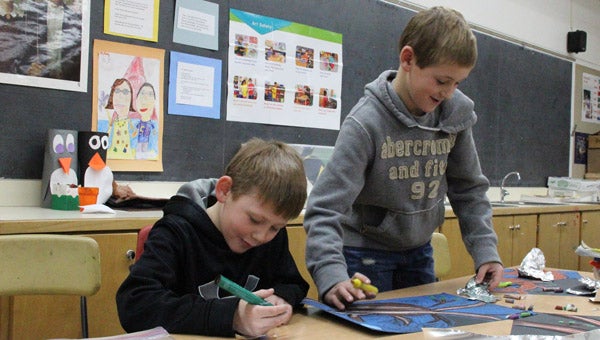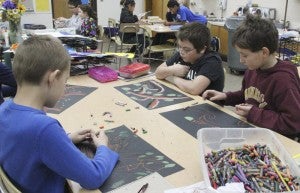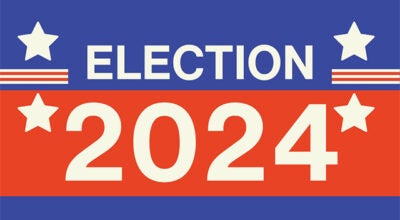Learning perceptions
Published 2:22 pm Friday, November 30, 2012

Kanin Hable, left, and Caden Jensen work on their projects during an art class at Sibley Elementary School on Thursday. -- Kelli Lageson/Albert Lea Tribune
Fourth-graders at Sibley Elementary School have started to benefit from a grant that will allow teachers to integrate lessons with arts, music and more to hopefully increase learning and student interest.
One example of the integrated curriculum is the way in which fourth-graders are learning about Minnesota’s American Indian population and its history. Fourth-grade teacher Kristen Seeger said the overarching theme of the work will teach the children about how people have different perceptions and opinions, and it will also teach them how to respect these perceptions.
The lesson plan integrates music and art into social studies classes. First the students were able to take photographs at the Big Island Rendezvous for an art class. But back in social studies class, Seeger asked the students to identify what in the photo they saw, thought and wanted to know more about.
Students will also learn more about traditional music and American Indian culture. This will all culminate later in the year when the fourth-graders make presentations about what they’ve learned. By doing all this learning and work the students will fulfill standards for art, music, social studies and media. Teachers also hope that they can help students learn about a subject even if the student says they don’t like history. If they like music or art, they can still learn about the subject because those teachers are collaborating.
The fourth-graders at Sibley will also study the Dakota War conflict. They will read journal entries from both American Indians and early settlers of Minnesota to learn more about how there are two sides to each issue.
“That’s something kids need is to respect other people’s opinions and perceptions,” Seeger said.
Teachers Teresa Bergene, Mark Blong, Jane Hanson, Jacque Sorensen and Seeger were the team who applied for the grant funding through the Perpich Center for Arts Education last spring. That center launched the Minnesota Arts Education Research Project 2010 with funding through the state’s Arts and Culture Fund of the Clean Water, Land and Legacy Amendment. After completing grant paperwork, the teachers at Sibley found out they would receive funding to integrate the arts into classrooms.
“It’s been a lot of hard work, but it’s beneficial for the kids,” Bergene said.
Sibley Elementary School received about $16,000 this year, and is expected to receive the same amount for the school years 2013-14 and 2014-15 if the funding is not affected by the Legislature this session. Principal Ross Williams said he’s excited to see direct results from the programming. Other school districts have seen better focus ratings, which is a part of the state’s Multiple Measurement Rating system for evaluating schools, according to Perpich.
“The whole idea of teachers collaborating makes students more well-rounded,” Williams said.
The funding will go to direct programming for students, but it also allows teachers to learn more. Because of the grant, teachers at Sibley will host a presenter about American Indian history who can help them better teach their students about the culture. Bergene said there are a number of benefits the school will take advantage of with this funding.
“It’s such a good thing for our kids,” Bergene said.
One of the elements of the statewide arts integration project by Perpich is that teachers share what they learned, as well as specific lesson plans, online so other schools can see that as well. Perpich, a state agency that serves all school districts in the state, says strong arts programs mean more academic achievement by students. But it can also have other effects on students as well.
“And research is also suggesting that arts education has a positive effect on young people’s interpersonal skills, confidence, motivation to succeed and preparation for work,” Perpich Executive Director Sue Mackert said in a press release.




